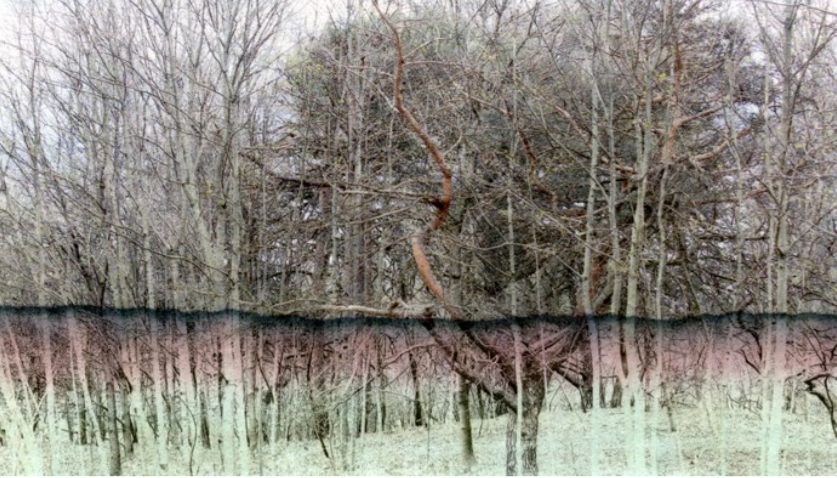Post
#Change: People Need Public Art and Public Art Needs People
24 Aug 2021
The London Society aims to provide a platform for the debate on how London ought to develop and to go with our theme of ‘change’ in 2021, we will have a strand of articles on the blog called “Change: Opinions” – polemical pieces that make a case for a radically changing some aspect of the status quo or of received wisdom.
Maria Amidu discusses the social benefit of public art in strengthening the bonds of community, aiding collective memory and giving meaning to place and space. According to Amidu, if anything needs to 'change' on London's streets, it's the quantity and quality of public art! If you have a piece that you would like to submit, please email blog@londonsociety.org.uk
People Need Public Art and Public Art Needs People was first published in 'What's the Point? A case for art in the public domain' published by UP Projects. Up Projects curates commissions public art. The organisation was founded in 2002 to support artists to make new work that has social relevance, engage communities, encourages learning and enriches the public sphere.
The manifestation of public art has certainly changed over the years, but the social need for it has not. Throughout history societies have marked the significance of events and those responsible for them by commissioning artists to create weighty, commemorative monuments. This endeavour has been about ensuring victors and pioneers never go unremembered. We encounter these unavoidable, permanent objects everywhere we go; invariably they find us rather than us finding them, and we respond to them consciously or unconsciously, aloud or in our heads, in conversation with strangers and friends.
And then there are the contemporaneous forms of public art, which often move slightly away from tradition, are lighter and can sometimes occupy a more temporal reality. We tend to encounter these forms of public art in a constructed context. Take Art Night London or Nuit Blanche in Paris and Toronto where public artworks are available to us from dusk to dawn, where the art deliberately makes itself seen, and shows off who and what has made these places, and we go to be delighted and bear witness to these fleeting transformations. Or projects such as the Fourth Plinth, in Trafalgar Square, London, where the lifespan of each commission exists long enough for the public to get to know an artwork, miss it when it is gone, and anticipate what is next to come.
Either way, these artworks matter. They matter because they help us say something about who we are as citizens and as meaning-making beings. They make our relationship with ourselves, each other and the civic tangible. It is impossible for public artworks to exist without comment from us – very few people will observe a public artwork and think or feel absolutely nothing. The reaction could be as mundane as like/dislike or as profound as returning day after day because the work has touched the returnee in some way.
Fundamentally, people build relationships with public art. Sometimes we forget how important these relationships are because the physicality of the work can dominate our focus, which of course is not a bad thing – why commission an artist to make an artwork if not for it to be seen? But there is always something else, something more discreet going on in parallel with the looking, and this is where the magic happens. People need public art. We need it to sit beside to mull over a dilemma, we need it as a landmark to meet by, we need it to pause from business as usual and remember the significance of a historical anniversary, we need it to understand how we fit into the narrative of the places we traverse every day and we need it to acknowledge the sheer wonder of our human existence.
Our built environment cannot only be about the necessities; architecture, street mapping and amenities. These artistic markers, otherwise known as public art, help us make sense of our material and emotional world, help us document the particular mood of a moment in time – moments in our shared social and cultural history.
I mean, what if public art did not exist?
Maria Amidu is a UK-based visual artist and writer, developing national and international site-specific and public realm projects. Her artistic concerns are influenced by the scope and significance of common experiences. She is interested in the relationships between people and place and what is hidden, obscured or unspoken in various social situations, using these elements as a means to try and substantiate myriad lived experiences. Recent projects: Watermarks (2021), Estuary 2021; “Where are we?” (2020), FrancisKnight; somewhere (2020), SEAS/Brighton Festival; edge/threshold/brink (2018) Nuit Blanche Toronto. Maria is currently a PhD student at the Royal College of Art, London.
Image: edge/threshold/brink by Maria Amidu first exhibited in a group exhibition curated by Karen Alexander for Dream Time: We All Have Stories during Nuit Blanche Toronto 2018. Image courtesy Maria Amidu and Nuit Blanche Toronto
